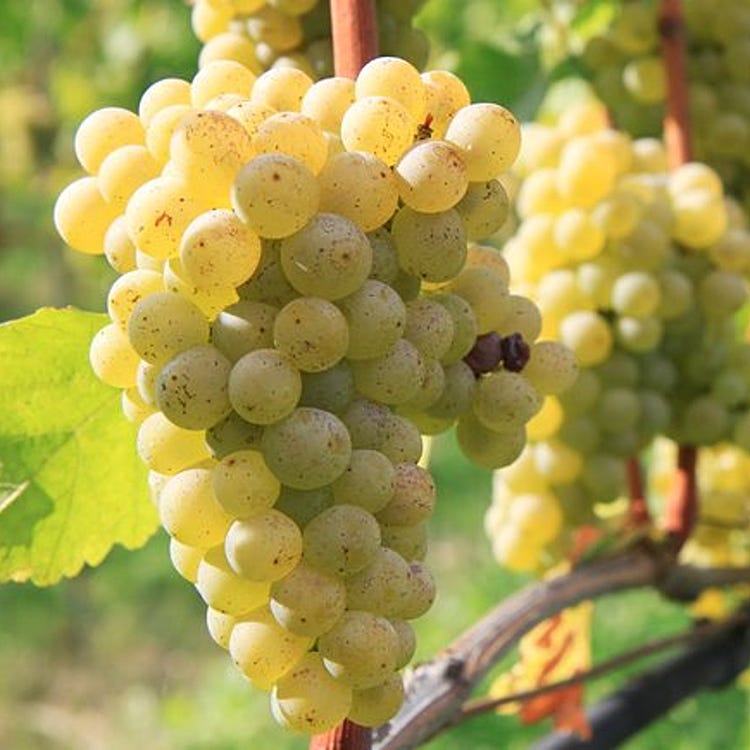Sauvignon Blanc: Love it or hate it?
Let’s have some Sauvignon Blanc! All right, how do you react to this invitation? Sauvignon Blanc is a grape that some wine lovers love to hate.
What is it about this seemingly inoffensive white grape with its roots in France that makes it divisive for many of us? I’m not sure there’s a single clear answer, but lets kick some ideas around.
What’s your take on Sauvignon Blanc? Love it, hate it, or “meh”?
Share your thoughts on this variety in Substack Chat!
First of all, wines made with Sauvignon Blanc tend to be aromatic. You wouldn’t think there’s anything wrong with that, since wine is known for its appealing, often complex aromas that invite a taste. But some aromatic-style wines offend some tasters by taking it over the top.
Think about the difference between just a whiff of floral perfume borne on a spring breeze, versus the trauma of being trapped in a concert right next to someone who apparently bathed in perfume before the show. Sauvignon Blanc can be kind of like that, too.
Sauvignon Blanc grape bunch
Of course this grape doesn’t have to fall in the latter category, but depending on vineyard practices and decisions in the winery, it can easily offend, as can other prominent aromatic varieties including Gewürztraminer, Muscat, Viognier, and even the respected Riesling.
If you’d like to know more about the art and science of aromatic wines, here’s an excellent article on this topic by Decanter magazine’s Chris Mercer.
What’s more, Sauvignon Blanc is a shape-shifter of a grape. More than many varieties, the nature of its aromatics can vary markedly depending on vineyard management and climate. Prune the vines so the leaves leave the grape bunches shaded and you’ll enhance the grassy, green-pepper character. Prune the leaf canopies back and encourage bright, citric flavors. Cooler climates and cool breezes further boost the green character; warmth and sunshine kick up the citrus.
The controversy got a boost in the 1980s when Cloudy Bay Vineyards and other New Zealand Sauvignon Blanc producers drew attention with their over-the-top aromas of green peppers and gooseberries and grapefruit and more than a hint of spraying tomcats. These Kiwi treats attracted a cheering horde of fanciers and a growing flock of imitators, along with a booing chorus of those who couldn’t stand the stuff.
Amid all the noise, it was easy to overlook the long history of crisp, citric, food-friendly Sauvignon-based whites from Sancerre and Pouilly-Fumé in the Loire; the rich and terroir-driven Sauvignon Blanc-Semillon white blends from Bordeaux; and even the attractive whites made in California (often labeled “Fumé Blanc“) that had little in common with the New Zealand style.
In other words, there’s quite a variety of Sauvignon Blanc and blends around. So when you tell me that you can’t stand Sauvignon Blanc, I’ll probably ask you which of the many Sauvignon Blancs you dislike.
Today’s featured wine is – you guessed it – a Sauvignon Blanc, a relatively pricey item that retails near the $30 mark. And it comes from a California winery, Rombauer, with a touch of controversy of its own.
Rombauer Winery was founded in 1980 by Koerner Rombauer, whose great aunt, Irma Rombauer, famously published the iconic Joy of Cooking in 1931. Just about everyone loves that cookbook, so where’s the controversy?
First, after four-plus decades of family ownership, Rombauer was purchased a year ago by the world’s largest wine company, E. & J. Gallo Winery. This Wine-Searcher article by wine writer W. Blake Gray tells us about that, and points out why he thinks this may not be a bad thing.
And then there’s Rombauer Chardonnay, a $40ish wine that many wine nerds view dismissively because it’s made in an intensely buttery, oaky, over-extracted style that many consider overpriced and built for an uncritical mass market.
Wine lovers may disagree about the joys of buttery Chardonnay, but the rest of Rombauer’s portfolio earns more enthusiasm. The Rombauer Sauvignon Blanc featured today is easy to like. Fresh, tart but rich, mostly made in steel and concrete with only a touch of neutral oak, it brings together Sauvignon Blanc’s characteristic citrus, melon, and grassy flavors in an appealing balanced mix that, for me, justifies its near $30 toll.
Regretfully, because of this price tag, my tasting report must lie behind our subscription paywall.
Since I don’t accept wine samples or other gratuities from the industry, I rely on paid-tier subscribers to help me cover the cost of the wines I review. If you’re not already on board, I’d love to have your support. Please consider subscribing to our paid-tier edition.
Support The 30 Second Wine Advisor with your paid-tier subscription. For $5 per month or $50 for a year (a 17% saving), you’ll receive additional wine notes funded by your subscriptions, gain quick direct access through Substack for wine-related questions, and gain my real appreciation for your support.
Keep reading with a 7-day free trial
Subscribe to The 30 Second Wine Advisor to keep reading this post and get 7 days of free access to the full post archives.






